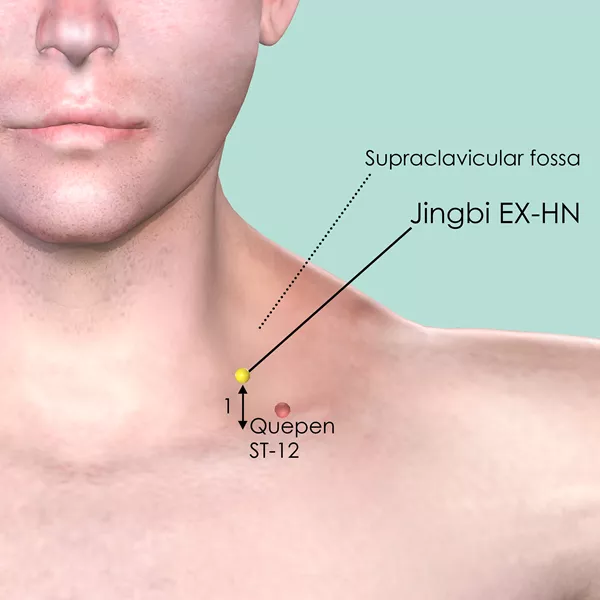Arm Numbnessaccording to TCM
Symptom family: Arms disorders and Symptoms
Sub-symptom(s): Upper Arm Numbness
What is Arm Numbness?
Arm numbness, also known as arm tingling, loss of arm sensation, paresthesia in arm, or arm paresthesia, refers to a partial or complete loss of sensation in one or both arms. This condition can result from various causes, including nerve compression, poor circulation, or underlying medical conditions such as diabetes or multiple sclerosis. Symptoms can range from mild tingling to complete numbness, affecting the ability to perform everyday tasks. Upper arm numbness is a specific form of this condition, affecting the upper part of the arm and potentially indicating more localized issues.
How Does TCM View Arm Numbness?
In Traditional Chinese Medicine (TCM), arm numbness is often viewed as a result of imbalances in Qi, Blood, and other vital substances. Symptoms like arm numbness can arise from various patterns of disharmony, making it essential to identify the correct pattern before treatment. Common patterns include Qi And Blood Stagnation, Wind-Damp Obstruction, and Phlegm accumulation. Qi And Blood Stagnation can result from injury or chronic strain, leading to poor circulation and numbness.
Wind-Damp Obstruction, often exacerbated by weather changes, causes a heavy, numb sensation in the limbs. Phlegm accumulation can block the meridians, disrupting the flow of Qi and Blood. TCM aims to restore balance by addressing these underlying imbalances.
Acupoints for Arm Numbness
In TCM, specific acupoints are used to treat arm numbness by addressing underlying patterns of disharmony. In the Large Intestine Channel, Jianyu LI-15, located antero-inferior to the acromion, helps remove obstructions and resolve Phlegm. Quchi LI-11, in the depression at the lateral end of the cubital crease, clears Heat, cools the Blood, resolves Dampness, and removes obstructions. Shousanli LI-10, 2 cun distal to Quchi LI-11, regulates the intestines, removes obstructions, and tonifies Qi.
Additionally, Jianliao TB-14 in the Triple Burner Channel and Jianqian EX-UE in the Extra Points for Upper Extremities are effective in clearing blockages and restoring proper Qi and Blood flow. By stimulating these acupoints, TCM aims to alleviate numbness and improve arm function.
Explore below some acupoints used to address arm numbness, organized by meridian.
- By Meridian
- Large Intestine Channel
- Triple Burner Channel
- Extra Points: Upper Extremities (EX-UE)
- Extra Points: Head and Neck (EX-HN)
- Bladder Channel
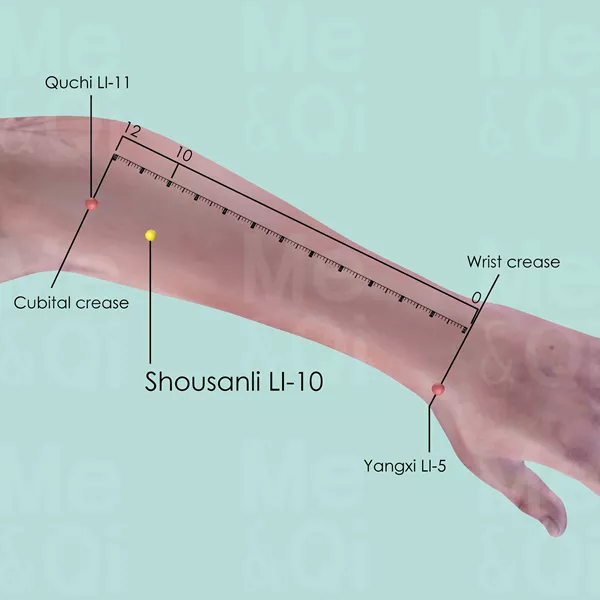
Shousanli LI-10
When a fist is made, with the ulnar side downward and elbow flexed, the point is 2 cun distal to Quchi LI-11 of the line joining Yangxi LI-5 and Quchi LI-11.
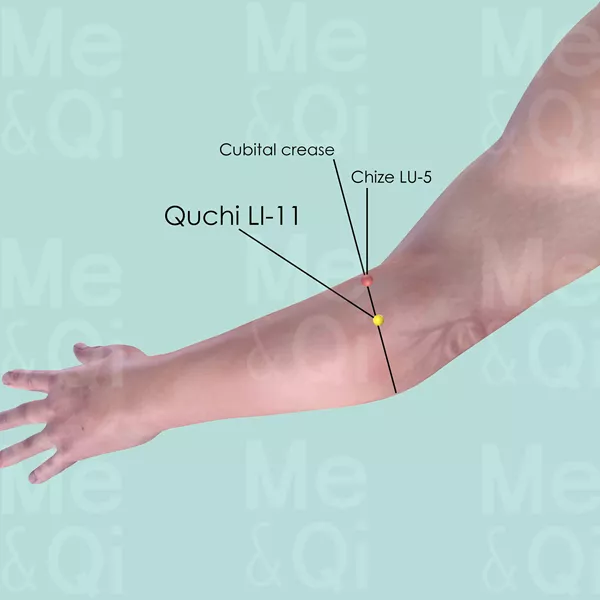
Quchi LI-11
When the elbow is flexed, Quchi LI-11 is in the depression at the lateral end of the cubital crease, midway between Chize LU-5 and the lateral epicondyle of the humerus.
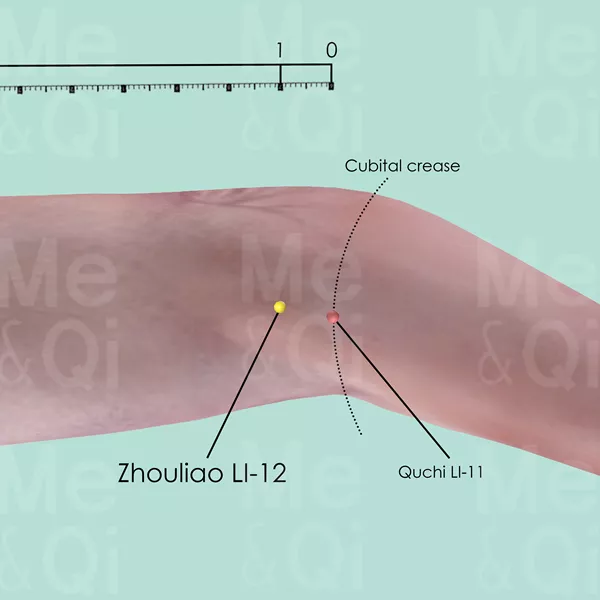
Zhouliao LI-12
When the elbow is flexed, Zhouliao LI-12 is on the anterior border of the humerus, 1 cun proximal to Quchi LI-11 on the lateral end of the cubital crease.
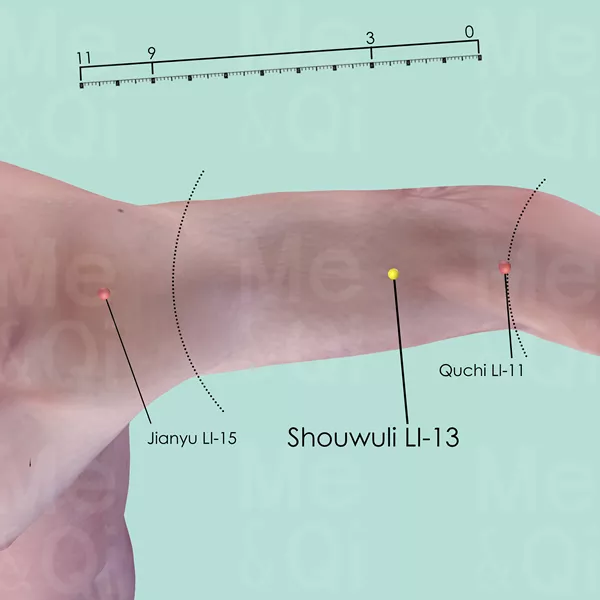
Shouwuli LI-13
Superior to the lateral epicondyle of the humerus, 3 cun above Quchi LI-11, on the line connecting Quchi LI-11 and Jianyu LI-15.
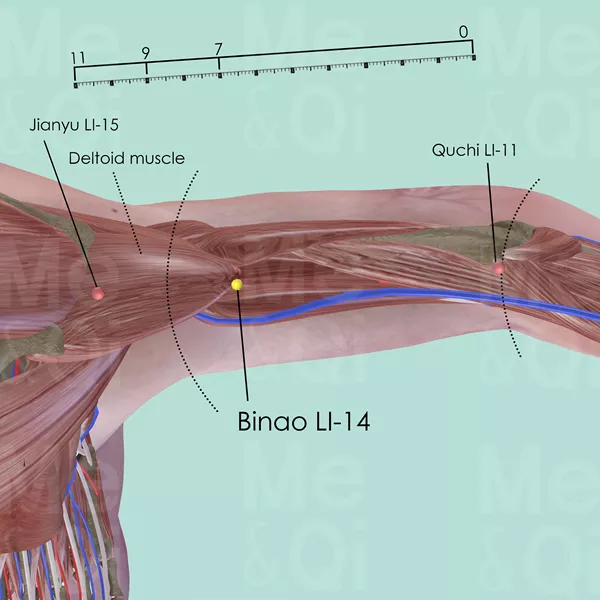
Binao LI-14
On the radial side of the humerus, superior to the lower end of deltoid muscle, on the line connecting Quchi LI-11 and Jianyu LI-15, 7 cun proximal to Quchi LI-11.
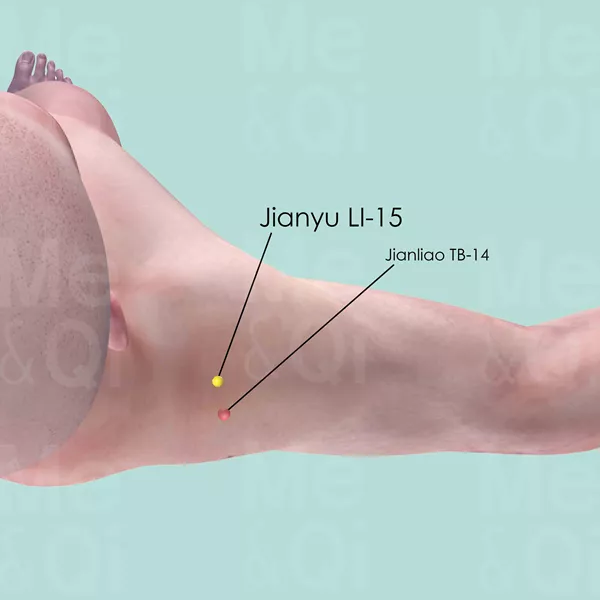
Jianyu LI-15
Jianyu LI-15 is located antero-inferior to the acromion, between the clavicular and acromial portions of the deltoid muscle.
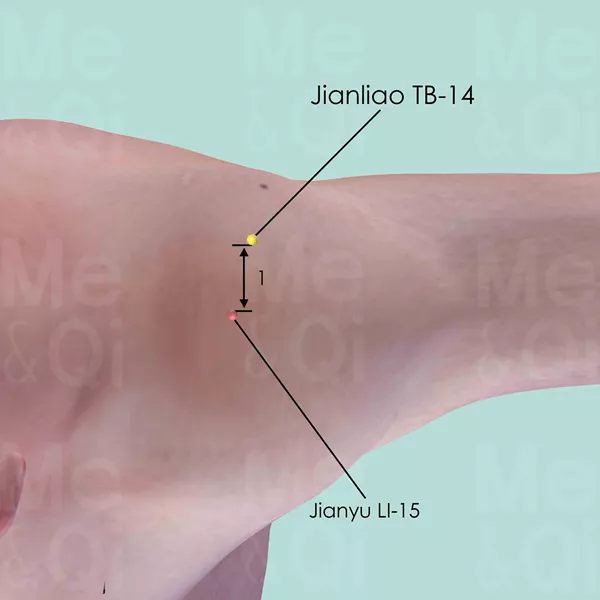
Jianliao TB-14
Posterior and inferior to the acromion, in the depression about 1 cun posterior to Jianyu LI-15.
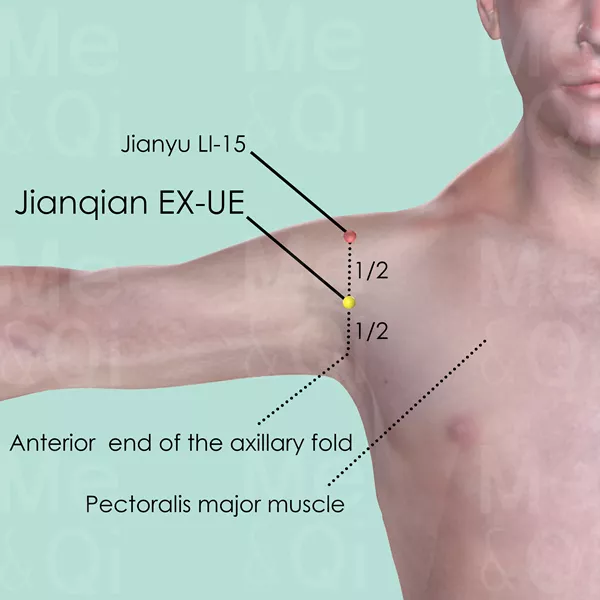
Jianqian EX-UE
On the midpoint of a line connecting the end of anterior axillary fold and Jianyu LI-15.
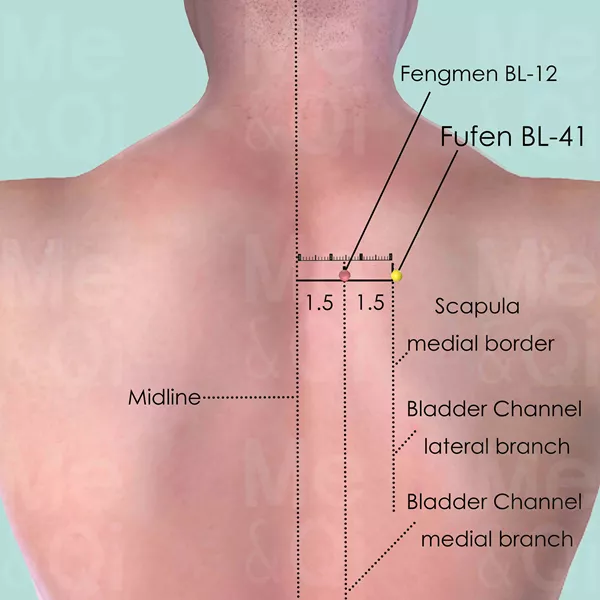
Fufen BL-41
3 cun (about 4 finger-breadths) lateral to the lower border of the spinous process of the 2nd thoracic vertebra (T2).

